Ingrown eyelash hair is also called trichiasis. It can occur on the lower lid or upper eyelid. When eyelashes curl and grow back into the skin, they cause a lot of discomforts. A pimple-like bump can form on the eyelid or eyelash line due to eyelash ingrown hair. Symptoms include hair scratching the cornea, pain and eyelid swelling. Here are causes, symptoms, and treatments to remove ingrown lash hair.
The medical term for ingrowing eyelash hair is trichiasis. It occurs “when the lashes turn inwards and rub against the front of the eye causing irritation.” [University Hospital Southampton of NHS]. Due to the irritation, the abnormally growing eyelash may show symptoms such as red eyes, sore and watery eye and blurred vision. It is also possible to get ulcers and infections in the eye.
Pictures: What does an ingrown hair on eyelash look like?
Normally, ingrown hair becomes common on areas of the skin with hair. The bumps occur after shaving as the hair follicles curl around and grow back. The hair pierces the skin as it grows downward, causing irritation. For ingrown eyelashes, the lash line hair grows into the skin, causing irritation in the eyelid skin and eyelash rim. Here are pictures of eyelashes with ingrown hair.
What causes ingrown eyelashes?
Just about anyone can suffer from trichiasis. The condition is more prevalent in adults than young people. So, what are the causes of ingrown hair on eyelashes? Eye infections, inflammations, some autoimmune disorders etc. can cause trichiasis.
1. Blepharitis and eye infections
Blepharitis is the inflammation of the eyelid rim or margin. It is characterized by meibomian gland disorder. According to MSD Manual, most patients who have had long-standing chronic blepharitis may develop ingrown eyelashes. Inflammation of the eyelid is highly associated with bacterial infections in the eye. Prominent symptoms of blepharitis include the following:
- Burning sensation in the eye
- Swollen eyelid
- Irritated, red eyes
- Eyes that won’t stop tearing (eye-watering)
- Blurred vision
- Photophobia or sensitivity to light
2. Stye on eyelid
Other than an abnormally growing eyelash, blepharitis is also associated with styes (pimple-like bumps on the eyelid) and chalazion. Styes or bumps on the eyelid can sometimes be a symptom of an ingrown eyelash. The glands on the eyelid and along the eyelash line can get infected.
The infection can spread to the root of eyelashes. This can alter their growth pattern. Pores near the eyelid and rim of the eyelids get infected. Swelling and cysts can obstruct the outward growth of the eyelash, causing trichiasis.
3. Trauma or injury to the eye
Trauma or some forms of injury can cause damage to the eyelid and eyelash line. If the eyelid gets torn near the rim or on the line where eyelashes grow, the skin along is likely to deform. Most eyelid injuries that cause ingrown lashes happen when the eyelid wound is left to heal in a misaligned position.
According to Mr. David Cheung BSc (Hons), MB ChB, FRCOphth, FRCSEd, a consultant in Lacriminal and Orbital Surgery, “If an eyelid wound is allowed to heal in a misaligned position, the eyelashes may start to grow inwards and rub against the eyeball.” Common causes of eyelid injuries include:
- Physical trauma from accidents or boxing punches.
- Thermal burns to the face and the eyes.
- Wounds after surgery, e.g. from ectropion repair and blepharitis.
4. Autoimmune disorders
Some autoimmune eye disorders can also cause ingrowing eyelashes. These include Stevens-Johnson Syndrome (SJS) and Vernal keratoconjunctivitis (VKC). Lupus is also one of the autoimmune diseases that can cause trichiasis.
According to Everyday Health, the inflammation of the eye and eyelids is one of the effects associated with lupus. The symptoms associated with this autoimmune disease include sore eyes, sensitivity to light, dry eyes, blurred vision, and trichiasis.
5. Entropion or inverted eyelids
Entropion is a condition that affects the eyelids. It is prevalent in the elderly, but it is often confused and misdiagnosed with trichiasis of the eyes. Entropion is where the eyelashes grow normally, except that the eyelid margins flip or turn inward towards the eye.
According to Eye Doctors of Lancaster, “The lower eyelid becomes laxer with age and the muscles holding the lid in its proper position become weakened.” When the eyelid inverts, eyelashes too turn back and rub against the eye.
6. Psoriasis
Psoriasis around eyes can cause serious inflammation to the eyelids. It is known to occur when the cells of your skin build up too quickly. Thick patches of skin cells build up around your eyelids, blocking the growth of eyelashes.
As a result, ingrown eyelashes form, causing further discomfort. Psoriasis around eyes is also known to weaken the skin on upper and lower eyelid. It can lead to entropion, which as seen above, contributes to the problem of trichiasis.
7. Other causes of ingrown hair on the eyelid
Apart from the cases discussed above, some minor causes of eyelid ingrown hair may include the following:
- Heavily hooded eyelids found in some nationalities increase the risk of trichiasis.
- Malformed eyelids.
- Congenital disorders.
- Eye infections from touching the eyes with dirty hands.
- Use of expired and contaminated cosmetics or eye makeups.
- People who are prone to severe acne can also get ingrown hair on eyelid waterline.
- Pulling of eyelashes also called trichotillomania.
Congenital disorders such as distichiasis (where eyelids grow in the oil glands) and epiblepharon (a redundant fold of skin under the eyelid) are also known to cause eyelashes to rub against the eye too.
Ingrown eyelash symptoms
When left untreated, ingrowing eyelashes can cause pain and irritation. In some people, infections can develop on the eye depending on the cause. Blurred vision can also be experienced by patients with trichiasis. Here are the symptoms of trichiasis.
Ingrown eyelash bump or a pimple on the waterline
Ingrown hair, whether on the eyelash or neck, causes bumps. The difference is that normal bumps that form on the skin occur after shaving and are called razor burn bumps. With the eyelash ingrown hair, the bump can form on the lower or upper eyelid due to the trichiasis disorder.
As the lash hair grows back into the skin on the eyelid rim, it can causes irritation and inflammation. A bump can erupt as a result of folliculitis or bacterial infections on the eyelash line or waterline. Do not attempt to pop an eyelash bump or a pimple. It will be painful and can cause further swelling.
Eyelid swelling
It is common to find your eyelids swollen. Eye infections and irritations can cause the eyelid to swell or enlarge. Swollen eyelids or their inflammation is a common symptom of blepharitis. In addition, the skin around the eye is tender and can easily experience a burning sensation when irritated.
Eyelashes that turn back and rub on the cornea can also rub on the eyelid rim or waterline. This can produce a significant amount of discomfort. It can also encourage scratching to relieve the itchy feeling on the eyelids.
Pain and hurting when blinking
Pain in the eye is a result of inflammation. Eyelashes that turn and grow backward can scratch the eye. This will cause pain when blinking. Corneal abrasion produced by the eyelash is the source of the hurt or pain.
Think of the hair in your eye as the foreign object. As your eyelid rubs against the eyelash from the inside, it will cause eye pain. See your doctor have the ingrown or bent eyelash hair removed or plucked.
Eyelash scratching cornea
Even when in the corner of the eye, eyelashes growing backward can cause a corneal abrasion. The eyelash scratching the cornea is a primary symptom of eyelash trichiasis. If you feel like there is something in your eye constantly, it could be a sign of eyelash hair growing backward.
This trichiasis symptom can lead to eyes constantly watering, redness and the need to rub the affected eye for relief.
Other symptoms of ingrown eyelash on upper and lower eyelids include eyelash follicle inflammation, feeling like something is scratching the eye, blurred vision due to reduced corneal opacity from constant eye watering, etc.
Ingrown eyelash treatment
Will an ingrown eyelash fix itself? Do curved backward eyelashes go away on their own or without treatment? Removing the abnormally growing eyelash is the primary solution to get rid of the pain, bumps and corneal abrasion. Below, we have discussed different trichiasis treatment options as well as removal methods you should expect.
1. Warm compress remedy
A warm compress can help relieve a swollen eyelid. It increases the circulation of blood to the surface and promotes quick healing.
- Make a warm compress using a piece of cloth.
- Apply to the irritated upper eyelid or lower eyelid for about 10 minutes.
- Repeat this twice a day until you get relief.
Warm compress treatments can only help to get rid of the eye pain and swelling. Ensure that the ingrown hair on the eyelash line is removed or the problem treated first before applying this home remedy.
2. Ingrown eyelash removal
A more permanent treatment is removing the eyelashes that grow back. It is even a better way to prevent trichiasis. However, in some instances, the affected eyelashes can remain recurring, causing corneal abrasion over and over. There are different methods of ingrown eyelash removal, including plucking using tweezers, electrolysis, laser surgery etc.
Epilation with tweezers
Removing misdirected eyelashes can be done at home if you know what you are doing. However, we strongly recommend that you see your eye doctor for help with the procedure. Epilation or removal using tweezers is the manual removal method.
This method is considered a temporary way to get rid of trichiasis eyelashes and carries the risk of recurrence. The plucked eyelashes can grow back after a few weeks and cause the irritation again.
Electrolysis to get rid of ingrown eyelash
Electrolysis is the use of high-frequency electrical current. It can get rid of the ingrowing eyelash hairs. However, it is known to be effective for a few hairs and not many on the upper and lower eyelids. It also has side effects such as scars that form on the adjacent eyelid rim. It is also a tedious procedure and is likely to cause further irritation to the eye.
Surgery
Surgery has been found successful in removing and treating trichiasis. A surgical procedure with anesthetic can be done to change the direction of the eyelash growth or to remove the abnormal lashes permanently.
Most surgeries done to correct ingrowing eyelashes are done quickly and safely. The advantage of this method of treatment is that the results can be permanent. The only downside to this treatment procedure is likely to be the cost.
Cryosurgery
Cryosurgery involves the use of liquid nitrogen to freeze the affected lashes. If the lash is removed or plucked out first, the procedure will prevent regrowth of a new follicle. This treatment, however, is restricted to particular sections of the eyelash only.
Video on ingrown eyelash on the upper eyelid
The top eyelid is the most commonly affected with ingrown hair on eyelashes. However, there are equal reports of cases of people with trichiasis on the lower eyelid as well. Where it starts, it is likely that you will develop a bump or a pimple.
If the eyelash is infected, you are likely to get a cyst. See a doctor for draining of the cyst and removal.
Sources and references
- MSD Manual: Trichiasis on eyelids treatments
- The Eye Practice: Watery Eyes: Caused By Ingrowing Eyelashes
- Everyday Health: Vision Problems and Autoimmune Disorders
- HealthLine: What Can I Do About Psoriasis Around the Eyes?
- Eye Doctors of Lancaster: Understanding Trichiasis, Entropion and Ectropion
- Review of Ophthalmology: Trichiasis: Lashes Gone Astray

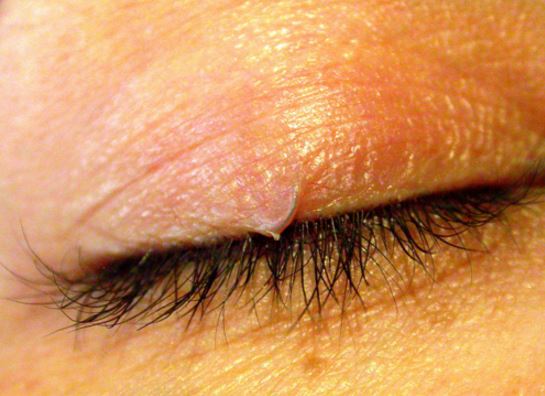
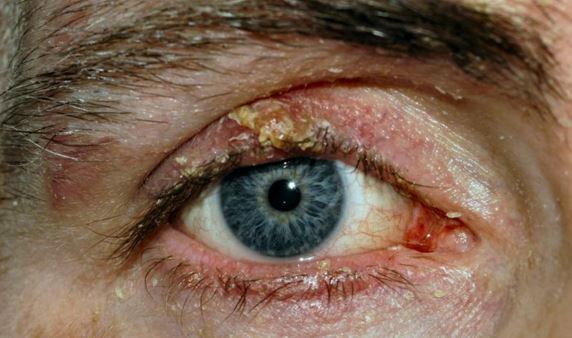
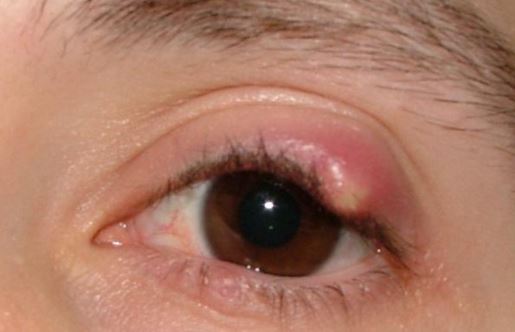
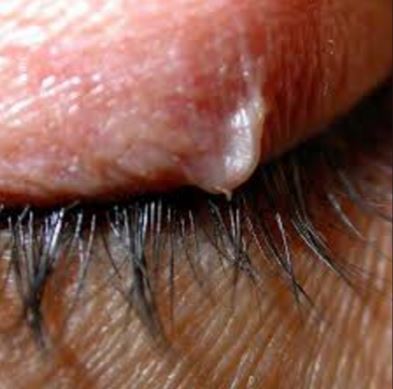
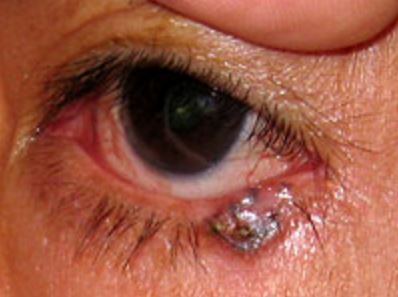
2 comments
I had Stevens Johnson syndrome from adverse reaction to Septra DS in 2009 and have had numerous eye infections and extra eye last growth and I see 2 different eye MDs for removal. At present we do not know if
I have Lupus or Sjogrens. During recovery of SJS of had bilateral glue ear losing a lot of my hearing, +Lupus and RA, but had a repeat at a different lab and it was _. I am sure that I have cost Medicare 2M for all of the immune disorders from Septra and Crestor. Shame on the FDA for allowing these awful drugs to humans.
SJS since 2009, wrote a book about this What’s In Your Genes? Human Threads Linking Genetics and Genealogy, my 7th book. Adverse reaction to Septra DS. Now have adverse reaction to Crestor, L SCCancer and have malignant tumor cells, no cure.
The Genzyme results were:
Marker EMA Epithelial Membrane Antigen (E-29)
GCDFP-15 Gross Cystic Disease Fluid Protein 15, Breast, Salivary Gland
S100 S100 Protein, Nerve Sheath Tumor, Melanoma, Chondrocyte
TTF-1 Thyroid Transcription-1 Lung and thyroid Carcinoma
P63 (Pab 1801) Mutated Tumor Suppressor Gene (PAb1801)
This is my DNA from SCCancer from right groin surgery 2010, have had +Lupus and +RA after SJS. No one is sure if I have sjogrens or Lupus. I have so many disorders. I am a medical writer. You may write me if you like.